10 Insights on Customer Demographics to Enhance Marketing Strategies
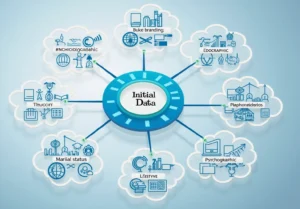
10 Insights on Customer Demographics to Enhance Marketing Strategies
Overview
The article emphasizes the importance of understanding customer demographics in enhancing marketing strategies. By tailoring approaches to different consumer segments, businesses can better connect with their audiences. Insights into various factors such as:
- age
- gender
- income
- geographic location
- education
- marital status
- occupation
- lifestyle
- psychographics
serve as essential features that inform targeted marketing campaigns. These tailored campaigns not only resonate with specific audiences but also improve engagement and conversion rates. Ultimately, leveraging these demographics allows businesses to create more effective marketing strategies that yield tangible benefits.
Introduction
Understanding customer demographics is essential for businesses aiming to refine their marketing strategies and connect with diverse audiences. By tapping into insights regarding age, gender, income, and lifestyle, marketers can craft targeted campaigns that resonate with specific consumer segments. This approach ultimately enhances engagement and conversion rates.
However, as the landscape evolves, how can companies navigate the complexities of these demographics to stay competitive and relevant in a rapidly changing market? This article explores ten critical insights into customer demographics, empowering marketers to elevate their outreach and drive success in 2025 and beyond.
Initial Data Offering: Access Diverse Customer Demographics Datasets
The Initial Data Offering (IDO) acts as a centralized hub, granting access to a diverse range of datasets on customer demographics. Featuring datasets that encompass age, gender, income, and other relevant factors, IDO empowers businesses to tailor their promotional strategies effectively. The platform's dedication to quality guarantees that users can discover reliable and unique datasets that mirror current market trends, making it an indispensable resource for marketers seeking to elevate their outreach efforts.
Examples of datasets available on IDO include:
- Alternative Data: Insights into consumer behavior sourced from non-traditional avenues, providing a broader understanding of market dynamics.
- Fundamentals Data: Essential population details that serve as the foundation for basic promotional strategies, ensuring marketers have the necessary information at their fingertips.
- ESG Data: Environmental, social, and governance metrics that resonate with socially conscious consumers, allowing brands to align with their values.
As we look ahead to 2025, the utilization of customer demographics is increasingly vital, with companies recognizing their role in developing effective promotional strategies. Successful marketers harness these datasets to pinpoint trends and preferences, enabling more personalized and impactful campaigns. As industry professionals emphasize, the ability to access and analyze diverse population data is crucial for maintaining competitiveness in today's market landscape.
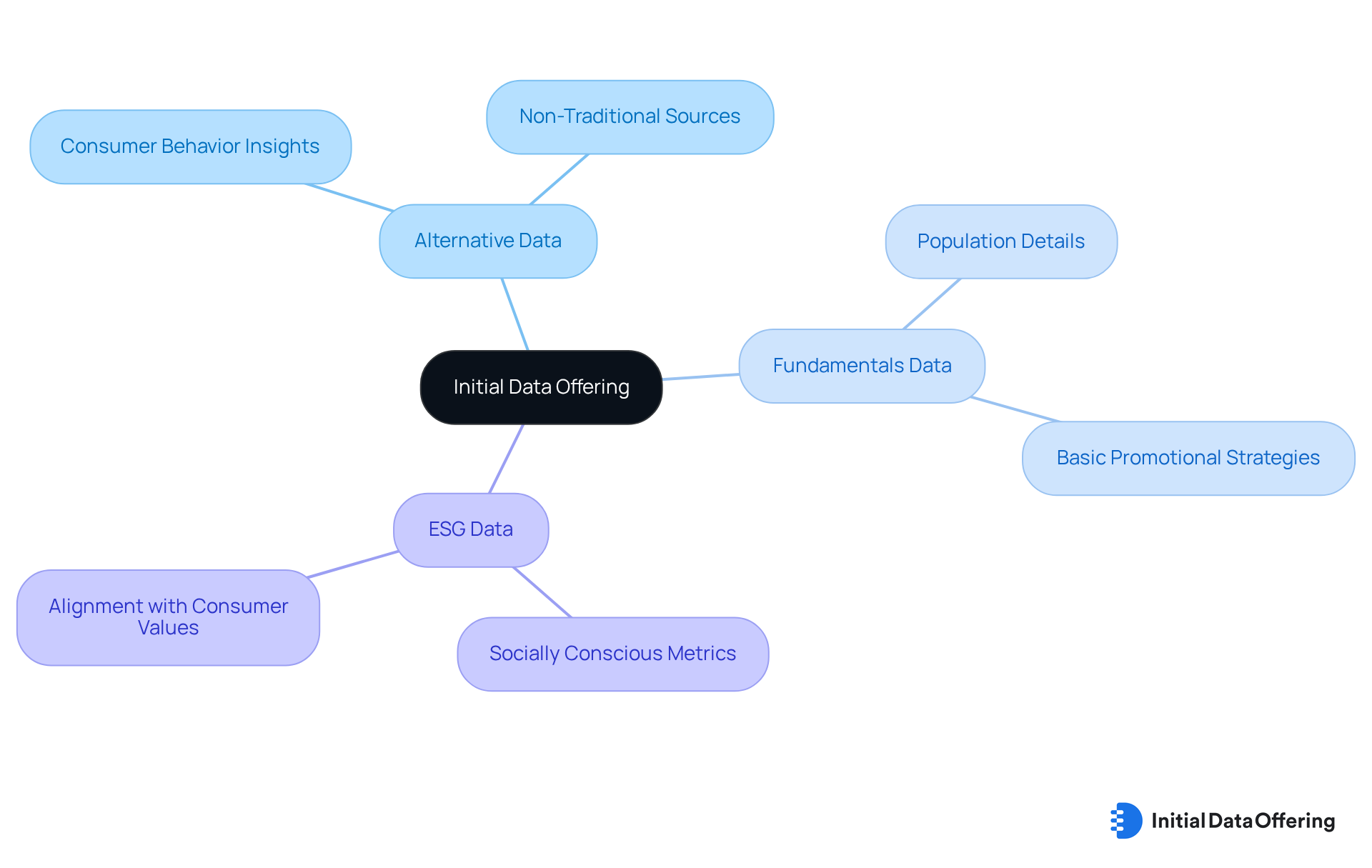
Age Demographics: Tailor Marketing Strategies to Different Generations
Understanding customer demographics, especially age groups, is crucial for developing effective promotional strategies, as each generation exhibits unique preferences and behaviors. Below is an analysis of how different age groups respond to marketing initiatives:
Baby Boomers (ages 57-75): This generation places a high value on quality and exceptional customer service, often responding favorably to traditional marketing channels such as television and print. Representing 20.6% of the U.S. population, they spend an average of 27 hours online each week, demonstrating a growing engagement with digital platforms. Brands that emphasize trust, reliability, and nostalgia resonate well with this audience, as nostalgic marketing can evoke positive memories and strengthen brand loyalty.
Generation X (ages 41-56): Often termed 'The Forgotten Generation', they value authenticity and are more inclined to connect with brands that align with their values. Comprising 19.6% of the U.S. population, Generation X is tech-savvy, utilizing various devices and spending about 40 minutes more on social media each week than Millennials. Successful marketing strategies for this demographic should blend elements appealing to both Baby Boomers and Millennials, leveraging their technological familiarity while incorporating nostalgic elements that reflect their experiences.
Millennials (ages 25-40): Accounting for 21.7% of the U.S. population, Millennials are significantly influenced by social media and peer recommendations. They prioritize experiences over products and appreciate brands that demonstrate honesty and transparency. Engaging this group through authentic storytelling and user-generated content can greatly enhance brand loyalty. Notably, 68.8% of Millennials are the most engaged users on social media, underscoring their digital presence and the importance of targeted online strategies.
Generation Z (ages 9-24): As digital natives, Gen Z makes up 20.9% of the U.S. population and emphasizes brand transparency and social responsibility. They consume substantial video content and favor seamless, entertaining experiences devoid of interruptions. Marketers must adapt their strategies to effectively engage this generation, focusing on human elements and staying abreast of technological advancements.
By leveraging insights into customer demographics of these age groups, marketers can craft targeted campaigns that resonate with each generation, ultimately enhancing engagement and conversion rates. As experts in generational outreach emphasize, understanding the diversity within these groups is essential for creating impactful strategies that connect with individuals on a deeper level.
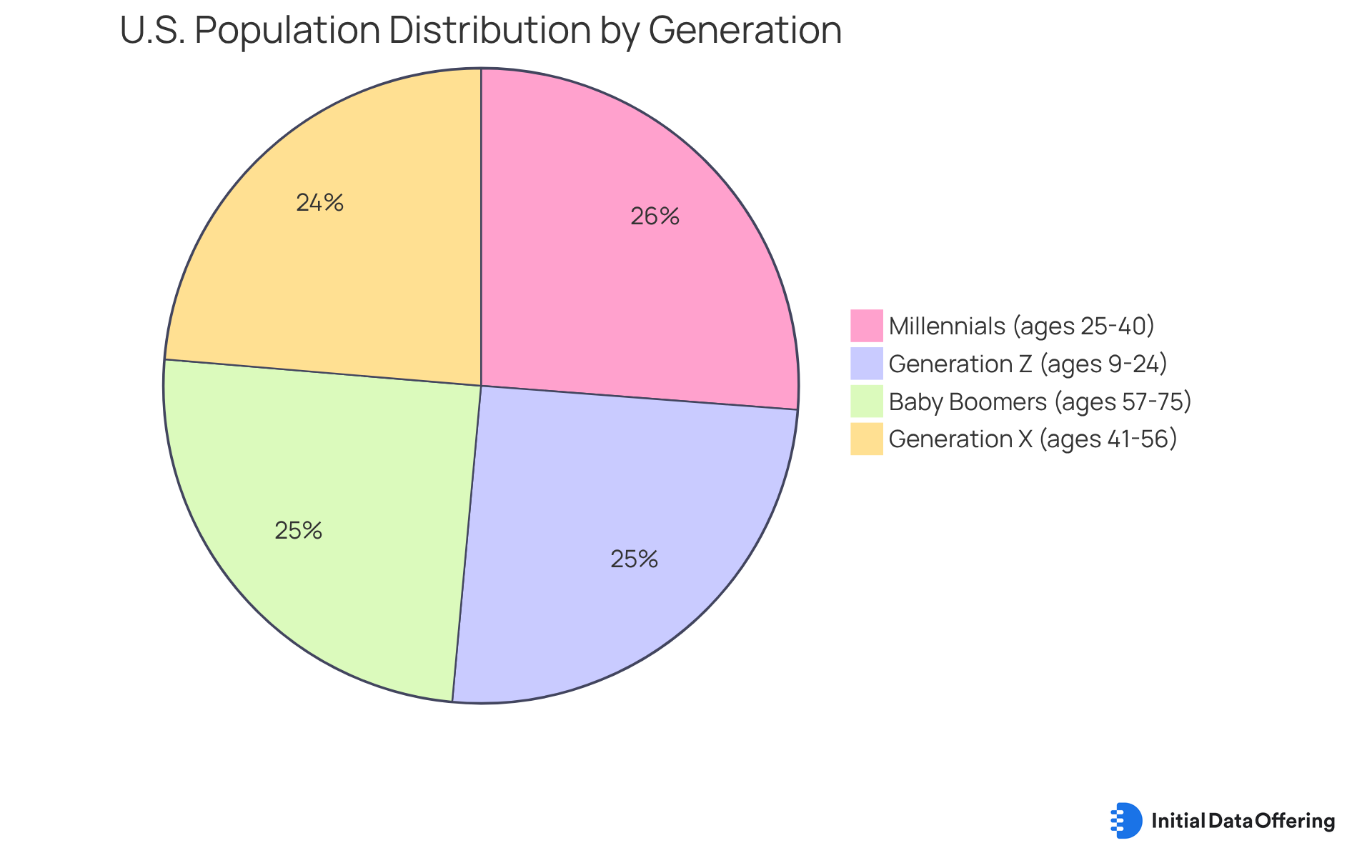
Gender Demographics: Craft Targeted Campaigns for Male and Female Audiences
Gender characteristics significantly influence consumer behavior and preferences, making it essential for marketers to tailor their campaigns accordingly. Understanding these differences can lead to more effective marketing strategies.
-
Male Audiences: They typically respond well to direct messaging and promotions that emphasize functionality and performance. Campaigns highlighting practical benefits and value-driven offers effectively engage this demographic. For instance, brands that underscore product durability and efficiency often receive favorable reactions from male shoppers.
-
Female Audiences: This group generally favors emotional storytelling and community engagement in marketing. Campaigns that emphasize relationships, experiences, and social connections resonate more deeply with female consumers. They tend to appreciate brands that cultivate a sense of belonging and shared values.
By leveraging customer demographics, businesses can craft targeted campaigns that address the distinct needs and preferences of each gender. This approach enhances engagement and drives sales, as campaigns resonating with their intended audience are more likely to succeed.
In 2025, the anticipated influence of gender-focused promotional campaigns on sales is substantial. Brands that successfully connect with both male and female audiences are expected to experience notable rises in conversion rates. As promotion experts highlight, grasping the subtleties of gender preferences is essential for creating effective promotional plans. For example, intelligent marketers recognize that while male audiences may prioritize product features, female audiences often seek emotional connections with brands.
Creating targeted campaigns that reflect these insights can lead to higher engagement and improved sales outcomes, ultimately positioning brands for success in a competitive marketplace.
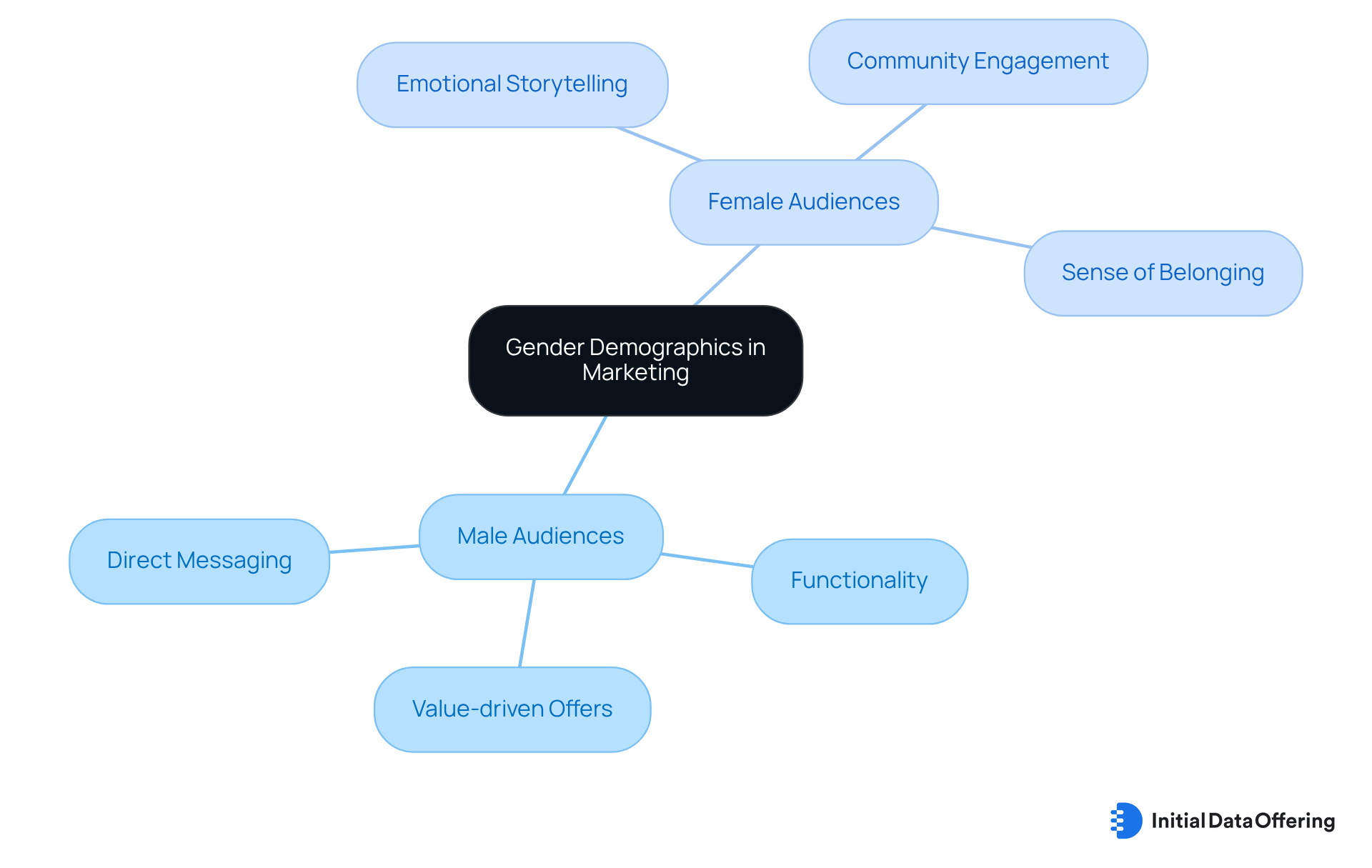
Income Demographics: Align Product Offerings with Customer Financial Profiles
Customer demographics play a pivotal role in shaping consumer purchasing power and guiding product offerings. Understanding these differences enables companies to customize their promotional approaches effectively. Consider the following insights:
-
Low-Income Consumers: This group often prioritizes affordability and value, making them responsive to discounts and budget-friendly options. With 51 percent of low-income households reporting a shift towards lower-priced brands and trading down for meat and dairy products due to rising prices, marketing strategies should emphasize cost savings and essential products. Becca Coggins observed that trade-down behavior continues to be steady and widespread, underscoring the necessity for brands to adapt to these evolving purchasing patterns.
-
Middle-Income Consumers: Typically seeking a balance between quality and price, middle-income consumers are receptive to mid-range products that deliver good value. As real median household income grew by 2.1 percent through 2022, businesses can capitalize on this by highlighting quality features and competitive pricing in their marketing efforts.
-
High-Income Consumers: This group tends to prioritize luxury and exclusivity, often willing to pay a premium for high-quality products. With 63 percent of high-income millennials planning to splurge on travel and jewelry, brands should focus on creating unique experiences and limited-edition offerings to attract this segment. Furthermore, Becca Coggins noted that shoppers are intending to indulge mainly in dining establishments and food items, indicating a shift in expenditure focuses.
By utilizing insights from income profile data and considering the effects of inflation on buyer behavior, businesses can develop focused promotional approaches that resonate with the customer demographics of their clients. This ultimately boosts product attractiveness and increases sales. How can your business leverage these insights to connect more effectively with your target audience?
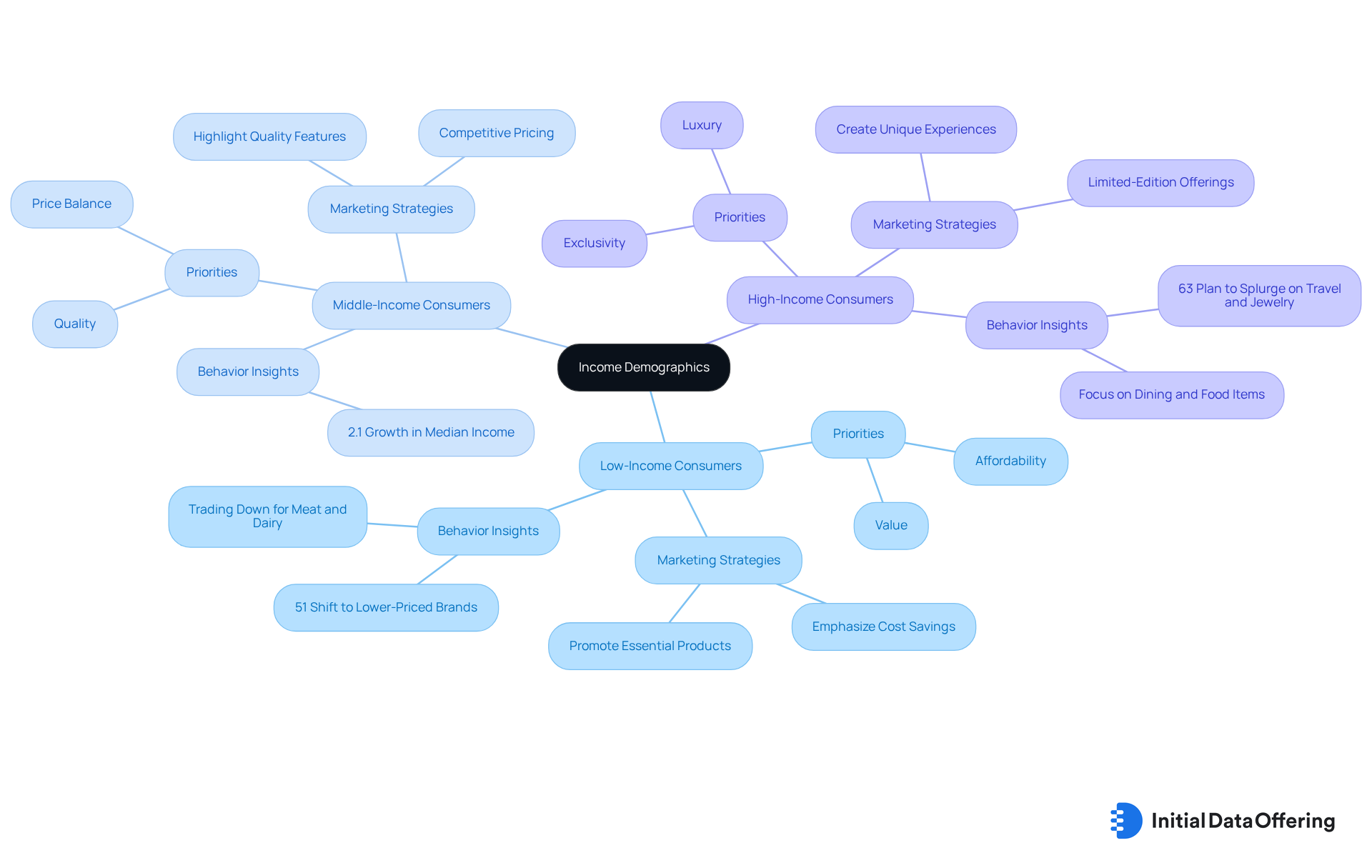
Geographic Demographics: Localize Marketing Efforts for Regional Relevance
Customer demographics, particularly geographic factors, enable marketers to customize their approaches, ensuring campaigns connect with local audiences. For instance, in urban areas, consumers often prioritize convenience and modernity. This makes them more receptive to tech-driven solutions and rapid delivery services. Campaigns that highlight efficiency and innovation tend to perform well in these markets.
Conversely, promotional approaches aimed at rural consumers should highlight community values and practicality. Messaging that focuses on reliability, local engagement, and the benefits of supporting local businesses can foster stronger connections in these regions. When venturing into international markets, understanding cultural nuances and preferences is essential. Customizing promotional efforts to align with local customs and expectations can significantly enhance engagement and brand loyalty.
By utilizing customer demographics, businesses can develop localized promotional plans that enhance relevance and engagement, ultimately resulting in better outcomes. This approach not only enhances promotional effectiveness but also aligns with the growing trend of targeting micro-communities, which is crucial for success in 2025. Furthermore, businesses that fail to adapt their purchasing experience risk losing approximately 40% of their intended market, highlighting the significance of these approaches. Moreover, utilizing tools like geofencing can enhance localized promotional efforts by targeting customers physically near a business. However, marketers should also be aware of the challenges associated with geographic segmentation, such as the complexity of execution and the risk of oversimplifying audiences. Handling online reviews and enhancing local SEO are also essential elements that can greatly influence the success of localized promotional approaches.
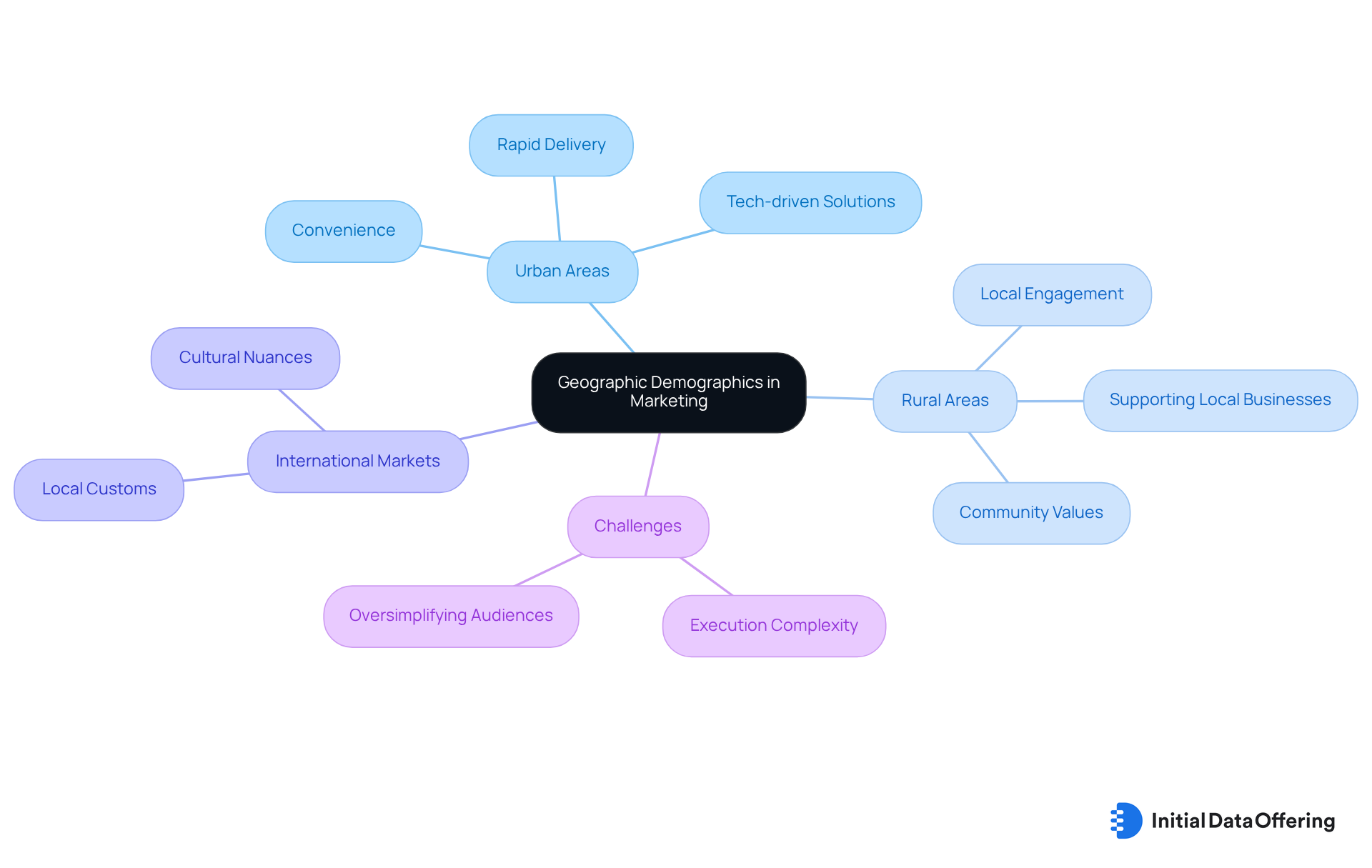
Education Demographics: Customize Messaging Based on Customer Education Levels
Comprehending education statistics is essential for customizing marketing messages that resonate with consumers' knowledge and preferences. Recognizing how different education levels can shape effective communication strategies is crucial.
-
High School Graduates: Messaging should be straightforward and relatable, emphasizing practical benefits and real-world applications. This demographic often seeks clarity and relevance in communications, making it essential to highlight how products or services can directly impact their daily lives. This approach not only ensures understanding but also fosters trust.
-
College Graduates: For this group, more sophisticated messaging that underscores innovation and thought leadership tends to resonate better. Engaging content that challenges conventional thinking and presents new ideas can capture their interest and foster deeper connections. This strategy encourages a dialogue that aligns with their aspirations.
-
Postgraduate Consumers: Individuals at this level appreciate in-depth analysis and data-driven insights. They are more likely to engage with detailed content that provides comprehensive information and supports their decision-making processes. Tailoring messages to this audience can significantly enhance engagement.
In 2025, education marketing will increasingly emphasize data-driven, personalized, transparent, and multi-channel approaches to engage students effectively. Marketers should utilize AI and machine learning to improve their strategies, ensuring they adapt to the evolving landscape. Furthermore, examining previous campaigns and engagement metrics is crucial for guiding future plans. Creating meaningful and engaging experiences will also be key to attracting prospective students.
By utilizing educational population data related to customer demographics, marketers can create tailored messages that improve engagement and cultivate significant connections with their audiences. This approach not only enhances communication effectiveness but also aligns promotional strategies with the distinct needs of each consumer segment, ultimately driving better outcomes in 2025 and beyond.
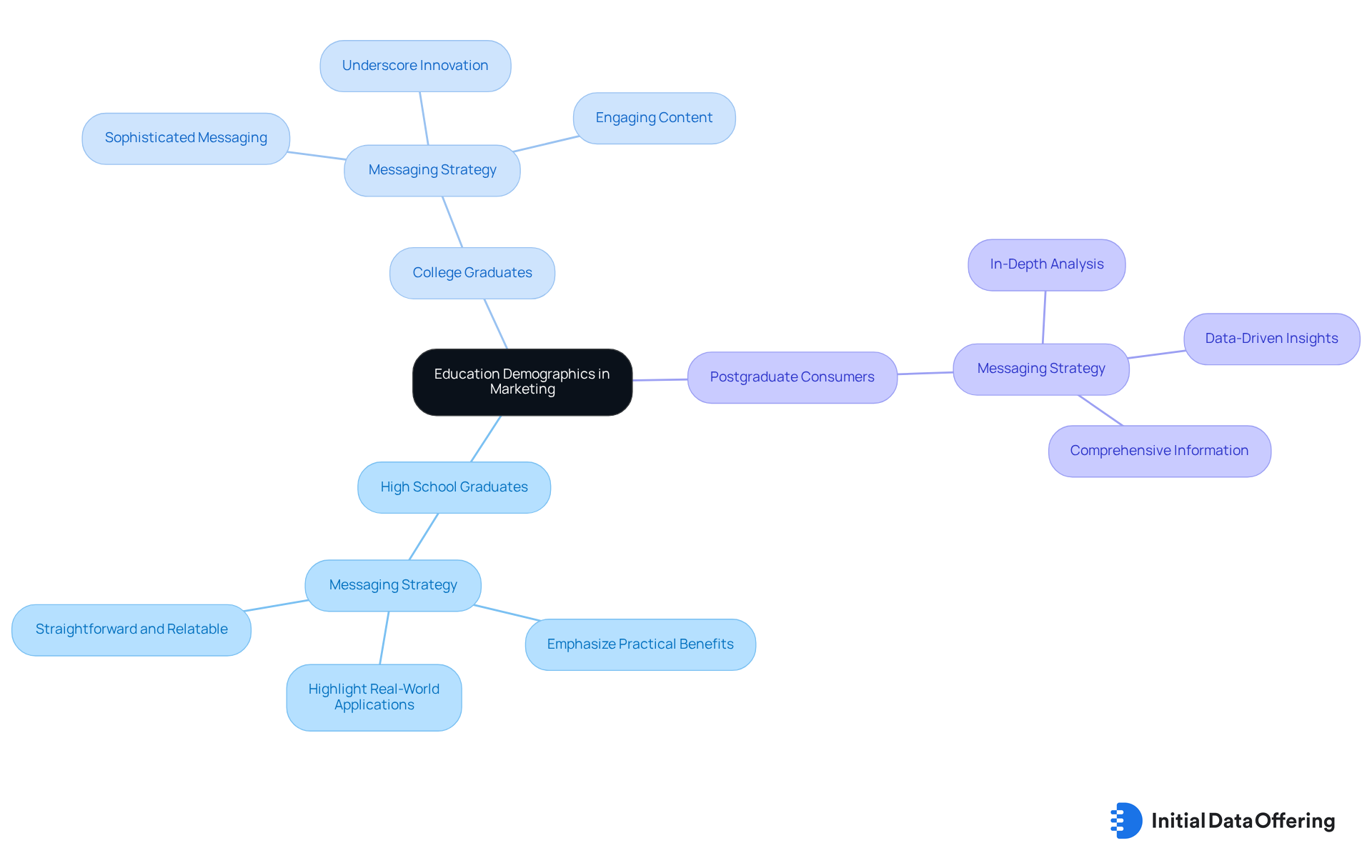
Marital Status Demographics: Target Family-Oriented Products Effectively
Understanding marital status statistics is essential for effectively targeting family-oriented products and services. For example, consider the following insights:
-
Married Couples: This demographic typically prioritizes family-oriented offerings. They are more receptive to marketing that emphasizes togetherness, stability, and shared experiences. Campaigns that highlight family benefits and quality time can significantly enhance engagement with this group. Notably, 39.9% of couples in the Northwest Territories are married with children, underscoring the importance of family-focused strategies.
-
Single Consumers: Often, this group concentrates on personal interests and experiences. They respond positively to promotions that encourage individuality, self-care, and personal development. Tailoring messages to emphasize independence and freedom resonates well with single consumers. Coca-Cola illustrates this point, as successful campaigns tap into the emotional aspects of relationships, effectively reaching both married and single individuals.
-
Divorced or Widowed Individuals: Marketing strategies for these individuals should focus on companionship and community involvement, addressing their unique emotional and social needs. Campaigns that foster a sense of belonging and connection can be particularly effective. For instance, Tinder’s promotional approaches highlight the importance of understanding the distinct requirements of singles, resulting in a smooth and efficient dating experience.
By leveraging customer demographics, including marital status data, businesses can develop targeted promotional strategies that resonate with various family structures. This understanding enhances engagement and drives sales. Recognizing these dynamics allows marketers to create relatable content that strengthens brand loyalty and boosts customer satisfaction.

Occupation Demographics: Tailor Products to Professional Backgrounds
Occupation statistics play a vital role in tailoring products and marketing strategies to align with the professional backgrounds of buyers. Understanding customer demographics allows businesses to effectively address the unique needs of different groups.
-
Corporate Professionals: This segment often prioritizes efficiency and productivity, making them responsive to tools and services that enhance their work performance. A survey indicates that 66% of individuals expect brands to understand their needs and preferences. Thus, marketers should emphasize time-saving features and productivity enhancements to resonate with this audience.
-
Creative Professionals: Individuals in creative fields typically seek inspiration and innovation, which makes them receptive to products that highlight creativity and uniqueness. Industry specialists suggest that focusing on originality and the creative applications of products can effectively engage this demographic.
-
Service Industry Workers: Those working in the service sector often value practicality and affordability. They are likely to respond positively to budget-friendly options that cater to their everyday needs. Promotional strategies that emphasize affordability and practicality can effectively connect with this group, particularly as consumers become more mindful of their spending.
By leveraging insights from occupational statistics and considering broader trends, such as the shift toward behavioral or needs-based segmentation, businesses can craft targeted promotional strategies that resonate with their customer demographics. This approach not only enhances product appeal but also fosters deeper customer engagement.
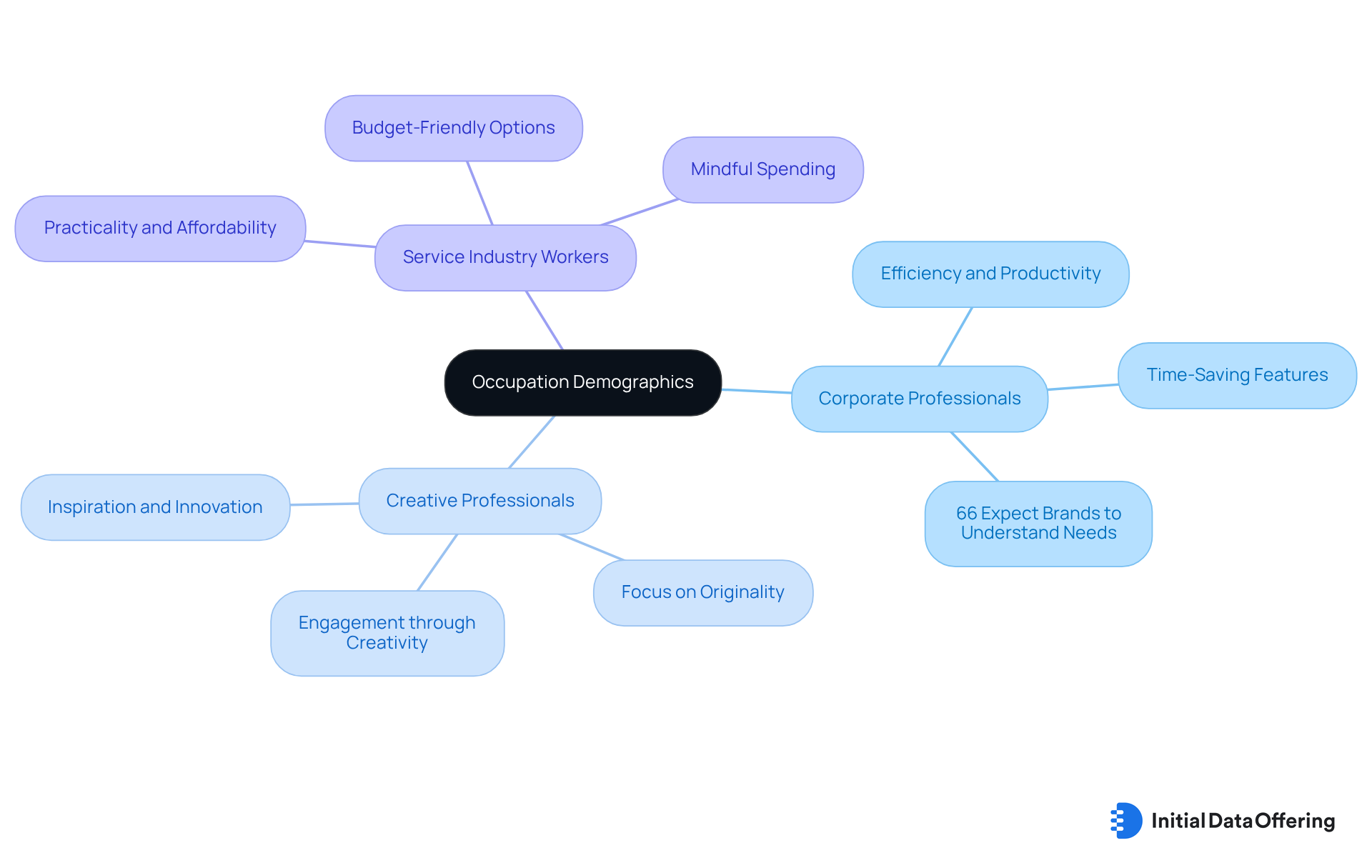
Lifestyle Demographics: Understand Consumer Behaviors for Better Targeting
Lifestyle demographics play a crucial role in understanding buyer behaviors and preferences, enabling businesses to enhance their marketing strategies effectively. For instance, consider the following segments:
-
Health-Conscious Consumers: This segment is increasingly drawn to products that prioritize wellness and sustainability. In fact, 55% of individuals are willing to spend over $100 a month on improved nutrition, self-care, and health. They are likely to respond positively to offerings such as organic foods, fitness-related services, and eco-friendly products, reflecting a growing trend towards holistic health. Moreover, 82% of shoppers think health and wellness product labels should be more transparent and simpler to comprehend. This highlights the necessity for brands to communicate clearly with this group to foster trust and loyalty.
-
Tech-Savvy Consumers: Often on the lookout for the latest innovations, these consumers are receptive to marketing that showcases cutting-edge technology. Brands that highlight advanced features and seamless integration of tech in everyday life can capture their attention and loyalty. As Generation Z's purchasing power is expected to reach $12 trillion by 2030, understanding their preferences is essential for brands striving to connect with this group effectively.
-
Luxury Consumers: This group values exclusivity and high-quality experiences. Marketing approaches that emphasize prestige, status, and unique offerings resonate well with them, driving engagement and conversion.
By leveraging insights from customer demographics, businesses can craft tailored marketing strategies that align with the specific behaviors and preferences of their target audiences. This method not only improves engagement but also greatly increases conversion rates. It is crucial for brands to adjust to the changing environment of buyer expectations in 2025. Furthermore, grasping the trend of shoppers downgrading in one category while indulging in another can offer important context for marketers maneuvering through the current economic environment. How can your business adapt to these insights to better meet consumer needs?
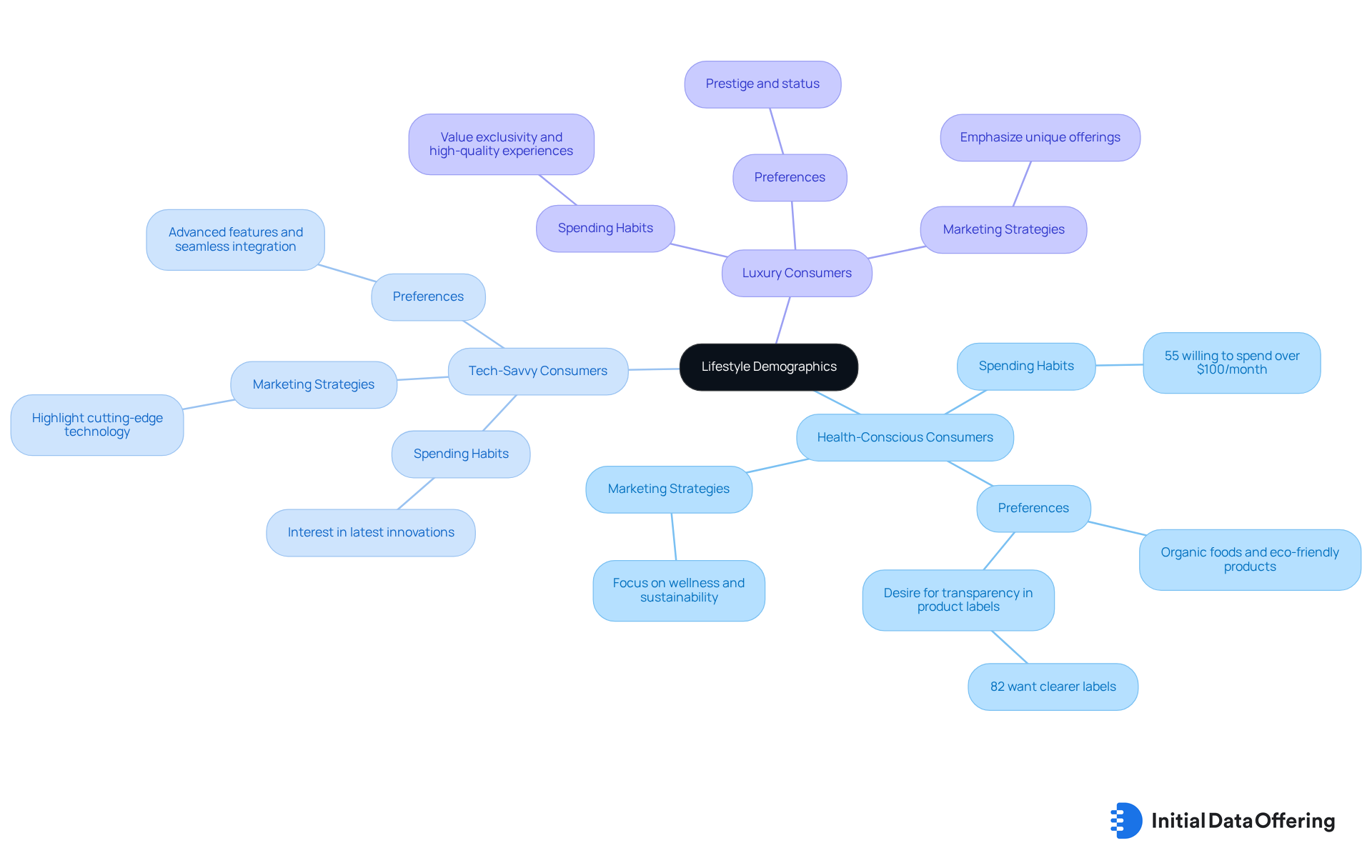
Psychographic Demographics: Explore Values and Interests for Deeper Insights
Psychographic characteristics delve into the values, interests, and motivations of consumers, providing marketers with deeper insights. For instance, consider the following segments:
-
Value-Driven Consumers: These individuals often prioritize brands that reflect their ethical beliefs. They respond positively to marketing that highlights social responsibility and sustainability. As Mary Dolan noted, "Psychographics are essential when promoting - they can be utilized to reach existing and prospective clients through personality characteristics, desires, and additional factors, rather than basic demographics."
-
Experience-Oriented Consumers: This group seeks memorable experiences over material possessions. They are receptive to promotions that emphasize adventure and exploration. Campaigns that inspire a sense of adventure can effectively engage this audience.
-
Community-Focused Consumers: These consumers value connection and belonging. They respond well to promotions that foster community engagement and shared experiences. Strategies that cultivate a sense of community can significantly enhance brand loyalty.
By leveraging customer demographics and psychographic information, businesses can craft marketing strategies that resonate on a deeper level with their audiences, ultimately enhancing brand loyalty and engagement. Notably, segmented campaigns have demonstrated superior performance metrics; Hubspot reports that segmented campaigns achieve 14.31% higher open rates and generate 101% more clicks compared to non-segmented campaigns. Furthermore, 80% of companies employing market segmentation report increased sales, highlighting the critical importance of adopting psychographic strategies. This approach not only bolsters customer retention but also drives higher engagement rates.
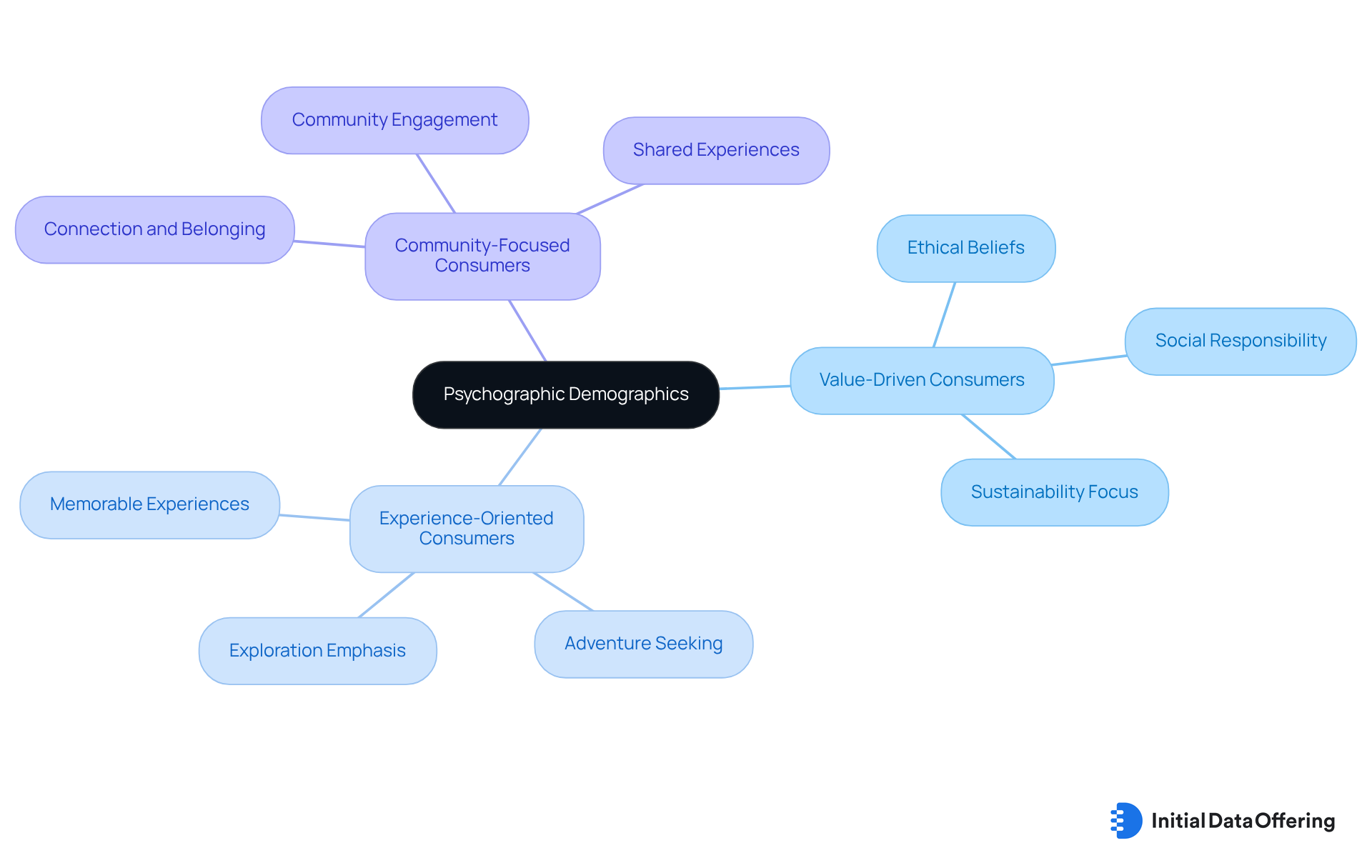
Conclusion
Understanding customer demographics is essential for businesses aiming to enhance their marketing strategies and connect more effectively with their target audiences. By leveraging insights from various demographic factors—such as age, gender, income, geography, education, marital status, occupation, lifestyle, and psychographics—marketers can tailor their campaigns to resonate deeply with consumers. This tailored approach not only improves engagement but also drives conversion rates, positioning brands for success in an increasingly competitive marketplace.
The article highlights key insights into how different demographic segments respond to marketing initiatives. For instance, age demographics reveal distinct preferences across generations, while gender insights emphasize the need for targeted messaging that aligns with male and female consumer behaviors. Additionally, understanding income levels helps businesses align their product offerings with customer financial profiles, and geographic demographics enable localization of marketing efforts for regional relevance. Furthermore, education and marital status demographics provide a framework for customizing messaging to better connect with diverse consumer groups, while lifestyle and psychographic insights delve into values and interests that drive purchasing decisions.
Ultimately, the significance of customer demographics in shaping effective marketing strategies cannot be overstated. As businesses prepare for the evolving landscape of 2025, they must prioritize the integration of demographic insights into their marketing plans. By doing so, they can foster meaningful connections with their audiences, enhance brand loyalty, and ultimately drive sales growth. Embracing this data-driven approach will be crucial for brands looking to thrive in the future, making it imperative to continuously explore and adapt to the diverse needs of consumers.
Frequently Asked Questions
What is the Initial Data Offering (IDO)?
The Initial Data Offering (IDO) is a centralized platform that provides access to a diverse range of datasets on customer demographics, including age, gender, income, and more, helping businesses tailor their promotional strategies effectively.
What types of datasets are available on the IDO?
The IDO offers several types of datasets, including Alternative Data (insights into consumer behavior from non-traditional sources), Fundamentals Data (essential population details for basic promotional strategies), and ESG Data (environmental, social, and governance metrics).
Why are customer demographics important for marketers?
Customer demographics are crucial for marketers as they help identify trends and preferences, enabling the development of effective promotional strategies that are personalized and impactful, thus maintaining competitiveness in the market.
How do different age groups respond to marketing initiatives?
Different age groups respond uniquely to marketing: - Baby Boomers (ages 57-75) value quality and customer service, responding well to traditional marketing channels. - Generation X (ages 41-56) seeks authenticity and aligns with brands that share their values, blending nostalgia with technology. - Millennials (ages 25-40) are influenced by social media and peer recommendations, valuing experiences and transparency. - Generation Z (ages 9-24) emphasizes brand transparency, social responsibility, and prefers engaging, video-based content.
What marketing strategies work best for male audiences?
Male audiences typically respond well to direct messaging and promotions that emphasize functionality and performance, focusing on practical benefits and value-driven offers.
How should marketers approach female audiences?
Female audiences generally prefer emotional storytelling and community engagement in marketing. Campaigns that highlight relationships, experiences, and social connections resonate more deeply with them.
What is the anticipated impact of gender-focused promotional campaigns by 2025?
By 2025, gender-focused promotional campaigns are expected to significantly influence sales, with brands that effectively connect with both male and female audiences likely to see notable increases in conversion rates.
Why is understanding customer demographics essential for marketers?
Understanding customer demographics allows marketers to create targeted campaigns that meet the distinct needs and preferences of different groups, enhancing engagement and driving sales.